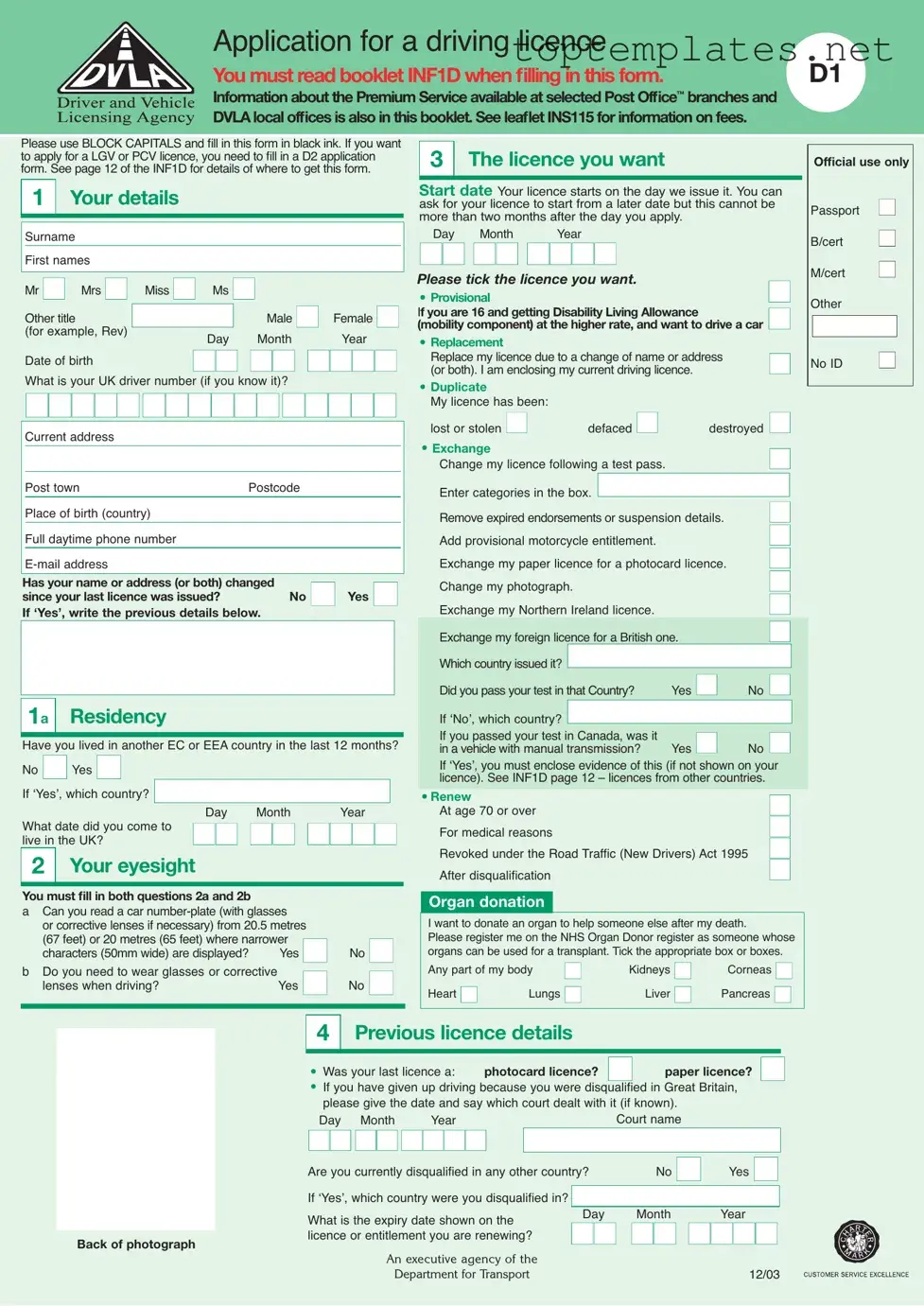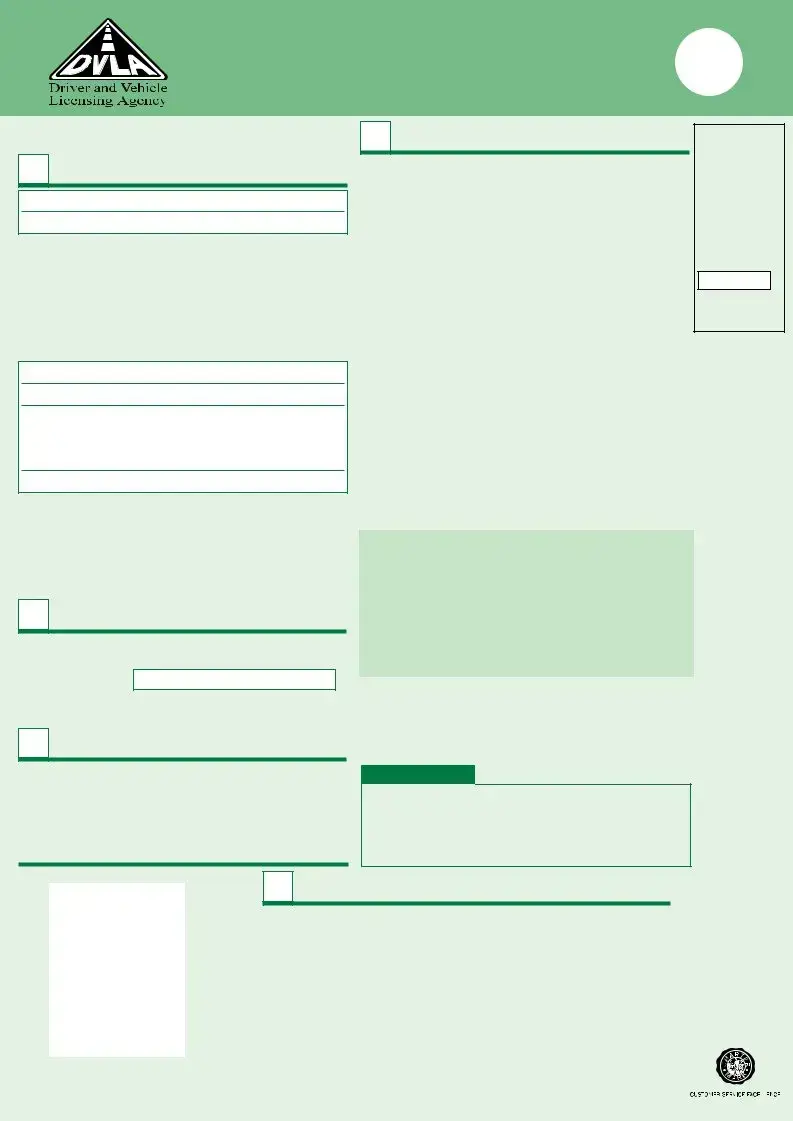What is a D1 DVLA form and who needs to fill it out?
The D1 DVLA form is an application used to apply for a driving licence in the UK for a car, moped or motorcycle. It is required for individuals who are getting their first licence, those who need to update their licence due to changes in personal details, such as a change of name or address, and for drivers requesting a replacement or duplicate licence. If you're applying for a Large Goods Vehicle (LGV) or Passenger Carrying Vehicle (PCV) licence, you will need to complete a D2 form instead.
Why do I need to read booklet INF1D before filling in the D1 form?
Booklet INF1D contains essential information that guides applicants through the process of completing the D1 form accurately. It includes details on the different sections of the application, the types of driving licences available, and the conditions that must be met by applicants. Moreover, it provides information about the Premium Service available at selected Post Office™ branches and DVLA local offices. To ensure that your application is completed correctly and to avoid any potential delays, it is necessary to read this booklet.
What documents do I need to provide along with the D1 form?
When submitting the D1 form, you are required to provide identity documents as proof of your identity. Acceptable documents include a current passport, a UK birth, adoption certificate, EC or EEA identity card, or evidence of state retirement pension, among others. Alongside the D1 form, applicants often need to supply a photograph that meets the required specifications and, depending on the type of application, additional documents such as a previous driving licence or a test pass certificate. Ensure you consult the booklet INF1D or the DVLA website for a detailed list of the necessary documents for your specific application type.
How do I change my name or address on my driving licence?
To update your name or address on your driving licence, you need to complete the relevant sections of the D1 form. If your name has changed, supporting documents, such as a marriage certificate, divorce decree, or deed poll document, must be provided to prove the name change. Remember to supply your current driving licence with your application. There is no fee for updating your name or address, but you must ensure that all documentation you provide is original as photocopies are not acceptable.
Can I apply for a provisional licence with the D1 form?
Yes, the D1 form can be used to apply for a provisional driving licence. Individuals who are 16 and receiving the higher rate of the Disability Living Allowance are eligible to apply for a provisional car licence. The form requires you to tick the appropriate box to indicate you are applying for a provisional licence. Additionally, it's crucial to meet all other requirements outlined in the form and booklet INF1D, including providing a valid identity document and a photograph that meets the DVLA's standards.
What should I do if I lose my driving licence?
If you lose your driving licence, you must apply for a duplicate by filling out the D1 form. In the section regarding the type of licence you want, there's an option to indicate that you're requesting a duplicate licence due to it being lost or stolen. You'll also need to submit a photograph and any required identity documents if your appearance has significantly changed or your previous licence was a paper licence.
How can I donate my organs using the D1 form?
The D1 form enables individuals to register their consent for organ donation after death. In the organ donation section, you can select which organs you are willing to donate, including any part of your body, kidneys, corneas, heart, lungs, liver, and pancreas. This consent is then recorded on the NHS Organ Donor Register. It’s a personal choice, and you should consider discussing it with your family.




